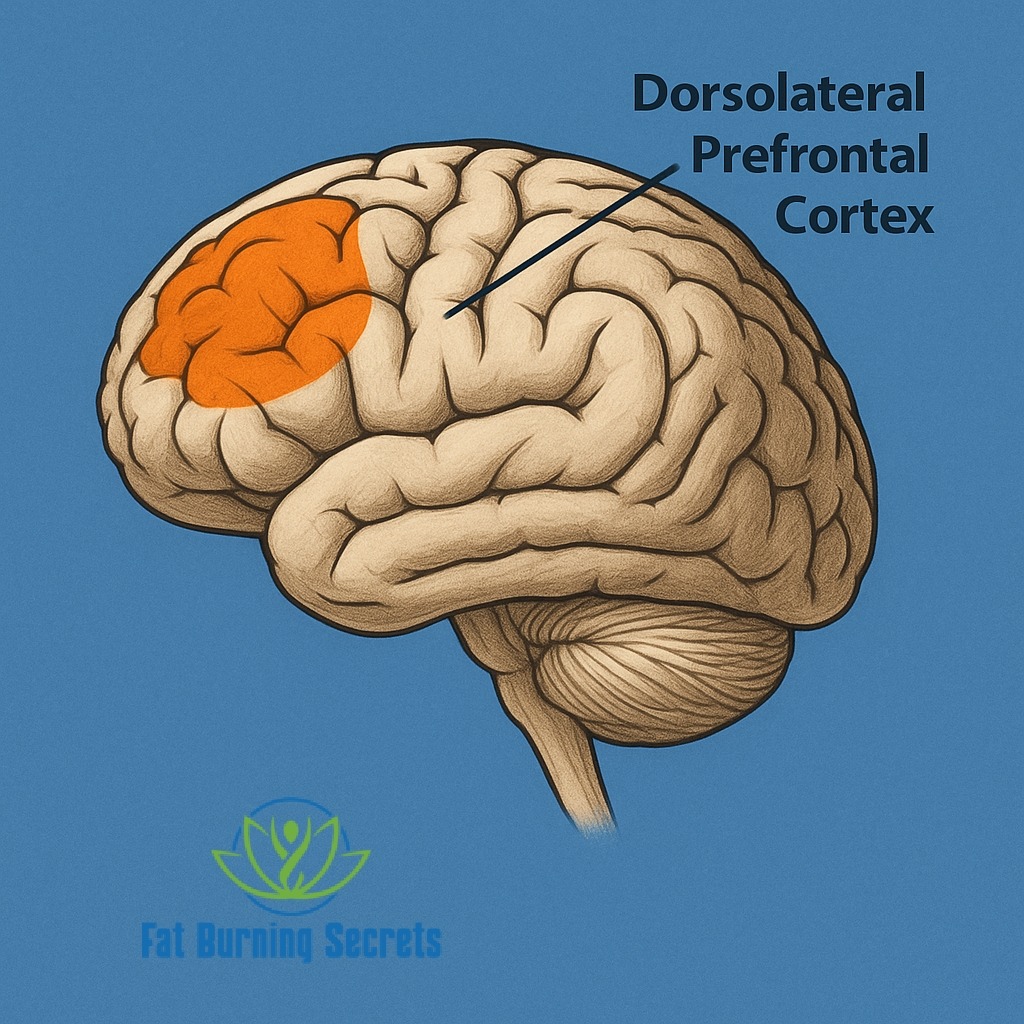Have you ever wondered how your brain influences your health as you age? While we often focus on physical health, the brain’s role in overall well-being is just as crucial—especially for seniors. One particularly fascinating brain region is the dorsolateral prefrontal cortex (DLPFC). Most people know the DLPFC for its role in complex thinking and decision-making, but emerging research shows it can also impact our overall health, from memory to emotional regulation and even physical well-being.
Understanding how the DLPFC works, how it changes with age, and what you can do to keep it healthy can make a significant difference in your quality of life as you grow older. Let’s explore this remarkable part of the brain and discover science-backed strategies to keep it sharp.
Understanding the Dorsolateral Prefrontal Cortex
The DLPFC is located in the frontal lobes of the brain, roughly behind your forehead and above your temples. It’s a key player in what neuroscientists call “executive functions”—the mental skills that help us plan, focus attention, remember instructions, and juggle multiple tasks successfully. These abilities are essential for daily living, independence, and adapting to new situations.
What Does the DLPFC Do?
- Decision-making: The DLPFC helps you weigh options, consider consequences, and make informed choices.
- Working memory: It allows you to hold and manipulate information in your mind, such as remembering a phone number long enough to dial it.
- Self-control: This region is involved in regulating impulses and emotions, helping you stay calm under stress.
- Problem-solving: The DLPFC is critical for analyzing situations and coming up with solutions.
The Impact of the DLPFC on Cognitive Health
How Does the DLPFC Change with Age?
As we age, it’s natural for certain brain regions to undergo changes, and the DLPFC is no exception. Research shows that the DLPFC tends to shrink slightly with age, and its neural connections may become less efficient. This can lead to slower processing speed, occasional forgetfulness, and challenges with multitasking or adapting to new routines.
However, it’s important to note that not all cognitive decline is inevitable. Many seniors maintain sharp executive function well into their later years, especially those who actively engage their brains and bodies.
Scientific Insight
A 2018 study published in Frontiers in Aging Neuroscience found that age-related decline in DLPFC function is associated with reduced working memory and executive control, but also highlighted that lifestyle factors—such as physical activity and cognitive engagement—can help preserve DLPFC health (source).
Why Is the DLPFC Important for Seniors?
The DLPFC’s health is closely linked to independence and quality of life in older adults. Strong executive function helps seniors:
- Manage medications and appointments
- Navigate social situations
- Adapt to new technologies
- Make sound financial decisions
- Maintain emotional balance
Impairments in this region are linked to increased risk of falls, poor health outcomes, and even early onset of dementia (source).
Harnessing the Power of the Dorsolateral Prefrontal Cortex
The good news is that you can take proactive steps to support and even enhance the function of your DLPFC as you age. Neuroscience research suggests that the brain remains plastic—capable of change—throughout life. Here’s how you can harness this power:
1. Cognitive Training
Engaging in mentally stimulating activities can help keep the DLPFC active and healthy. This includes:
- Puzzles and brain games (like Sudoku or crosswords)
- Learning a new language or musical instrument
- Memory exercises
- Strategy games (such as chess)
A 2017 randomized controlled trial in The Journals of Gerontology demonstrated that cognitive training can improve executive function and working memory in older adults (source).
2. Physical Exercise
Physical activity isn’t just good for your body—it’s also a powerful way to stimulate the DLPFC. Aerobic exercise, in particular, increases blood flow to the brain and promotes the growth of new neural connections.
- Walking, swimming, or cycling for at least 30 minutes most days
- Balance and coordination exercises, such as tai chi or yoga
A 2019 review in NeuroImage found that regular aerobic exercise leads to increased volume and improved function in the DLPFC among older adults (source).
3. Social Engagement
Staying socially active is another way to keep your DLPFC sharp. Conversations, group activities, and volunteering challenge your brain to process information, remember details, and respond appropriately.
4. Mindfulness and Meditation
Mindfulness practices, such as meditation and deep breathing, have been shown to enhance DLPFC activity and connectivity. These practices can improve attention, emotional regulation, and even physical health.
A 2016 study in Social Cognitive and Affective Neuroscience showed that mindfulness meditation increases DLPFC activation and improves cognitive control (source).
5. Healthy Diet
A diet rich in antioxidants, omega-3 fatty acids, and whole grains supports brain health. Foods like berries, leafy greens, nuts, and fatty fish are particularly beneficial.
Key Exercise Techniques for Stimulating the DLPFC
Here are some practical, science-backed exercises you can incorporate into your daily routine:
- Dual-task training: Practice walking while reciting a poem or counting backward.
- N-back tasks: Use apps or online games that challenge you to remember sequences of numbers or images.
- Mindful breathing: Spend five minutes each day focusing on your breath, gently bringing your attention back when your mind wanders.
- Social games: Join a bridge club or participate in group trivia.
Frequently Asked Questions
1. What is the Dorsolateral Prefrontal Cortex?
The DLPFC is a region in the frontal lobes of the brain responsible for executive functions like decision-making, working memory, and self-control.
2. How does the DLPFC affect aging?
As we age, the DLPFC may shrink and lose efficiency, which can impact memory, decision-making, and adaptability. However, lifestyle choices can help preserve its function.
3. Can cognitive exercises influence the function of the DLPFC?
Yes! Research shows that cognitive training, physical exercise, and social engagement can all stimulate and strengthen the DLPFC, even in older adults.
Wrapping Up: Dorsolateral Prefrontal Cortex and Health
The DLPFC plays a pivotal role in cognitive functioning, the aging process, and overall health. Understanding its function and incorporating techniques to stimulate this area can fundamentally improve the quality of life for seniors. The science is clear: your brain is adaptable, and with the right habits, you can keep your mind sharp and resilient well into your golden years.
I included this deep dive into the dorsolateral prefrontal cortex (DLPFC) because it’s the brain’s control center—driving focus, decision‑making, stress resilience, and healthy habit formation neurolaunch.com+1en.wikipedia.org+1. Everything in my Strongest Mind Fat Burning Secrets Lifestyle Coaching is designed to activate and strengthen that exact network, differentiating my approach from other fitness/health programs that ignore the science of how we change. This isn’t fluff—it’s a strategy grounded in neuroscience that rewires your brain to stick with real results.
Key Takeaways
- Understanding the DLPFC: It’s a key brain region involved in executive functions.
- Aging and the DLPFC: The DLPFC undergoes changes as we age, impacting cognitive function.
- Techniques for optimization: Cognitive training, physical exercise, social engagement, mindfulness, and a healthy diet can all stimulate and support the DLPFC.
Call to Action:** If you found this information helpful, share it with others on social media or leave a comment below. Let’s spread the power of knowledge about the dorsolateral prefrontal cortex!
Further Reading and References:
- Frontiers in Aging Neuroscience: DLPFC and Aging
- NIH: Executive Function and Aging
- Cognitive Training Improves Executive Function
- Aerobic Exercise and the DLPFC
- Mindfulness Meditation and DLPFC Activation
- The Reticular Activating System: Mastering Alertness and Attention
- Creatine for Brain Function: How it Boosts Memory, Focus and Mental Clarity



